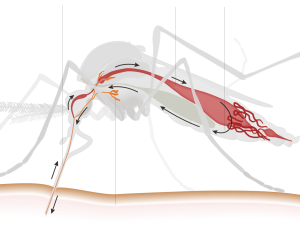Bothers seek places to live
- That fulfills essential requirements for air, dampness, food, and haven. The most ideal way to control bugs is to attempt to keep them from entering your home or nursery in any case. You can do this by eliminating the components that they need to get by.
Make the accompanying preventive moves:

Indoor Prevention
- Every living thing, including bugs, need water for endurance. Fix flawed plumbing, and don’t allow water to aggregate anyplace in pest control essex or around your home. For instance, leave no water on the plate under your houseplants, under your fridge, or in containers short-term. Eliminate or dry out water harmed and wet materials. Indeed, even moistness or high mugginess can draw in bothers.
- Eliminate food. Store your food in fixed glass or plastic holders, and keep your kitchen spotless and liberated from cooking oil and oil. Try not to leave food in that frame of mind on the counter or floor for extensive periods. Put food scraps or decline in firmly covered, creature-resistant trash bins, and void your trash regularly.
- Eliminate or close off indoor bug-concealing spots. Caulk breaks and holes to control bug access. Wash pets consistently and wash any mats or surfaces they lie on to control insects. Try not to store papers, paper sacks, and boxes for significant periods. Additionally, check for bugs in bundles or boxes before conveying them into your home.
- Block bother entrances. Introduce screens on all floor channels, windows, and ways to deter creeping and flying bugs from entering your home. Ensure any paths through the floor are hindered. Put weatherstripping on entryways and windows. Caulk and seal openings in walls. Keep entryways shut when not being used.
Outside Prevention
- Eliminate or annihilate open air bother concealing spots. Eliminate heaps of wood from under or around your home to try not to draw in termites and craftsman insects. Obliterate sick plants, tree prunings, and fallen organic products that might hold onto bugs. Rake fallen leaves. Keep vegetation, bushes, and wood mulch something like 18 inches away from your home.
- Eliminate reproducing locales. Tidy up pet droppings from your yard; they draw in flies that can spread microscopic organisms. Try not to collect litter or trash; it draws mice, rodents, and different rodents. Channel off or clear away standing puddles of water; water is a rearing spot for mosquitos and different vermin. Ensure channel pipes and other water sources channel away from your home.
- Take legitimate consideration of every outside plant. These incorporate blossoms, products of the soil trees, vegetables and different plants, and your yard. Great plant medical care lessens bother control needs — solid plants oppose bugs better compared to powerless plants. Plant at the best season to advance solid development. Use mulch to decrease weeds and keep up with even soil temperature and dampness. Water enough. Local blossoms, bushes, and trees frequently are great decisions since they adjust well to neighborhood conditions and require negligible consideration.
Cultivating
- Select sound seeds and seedlings that are known to oppose infections and are fit for the environment where you reside. Solid seeds are probably going to create mature plants with little requirement for pesticides.
- Assuming your nursery is huge, substitute lines of various types of plants. Bothers that favor one sort of vegetable (carrots, for instance) may not spread to all of your carrot plants if different vegetables (not on the bugs’ eating routine) are established in the adjoining lines.
- Try not to establish similar harvests in similar spots for a large number of years. That way your plants are not as helpless against bothers that endure the colder time of year.


